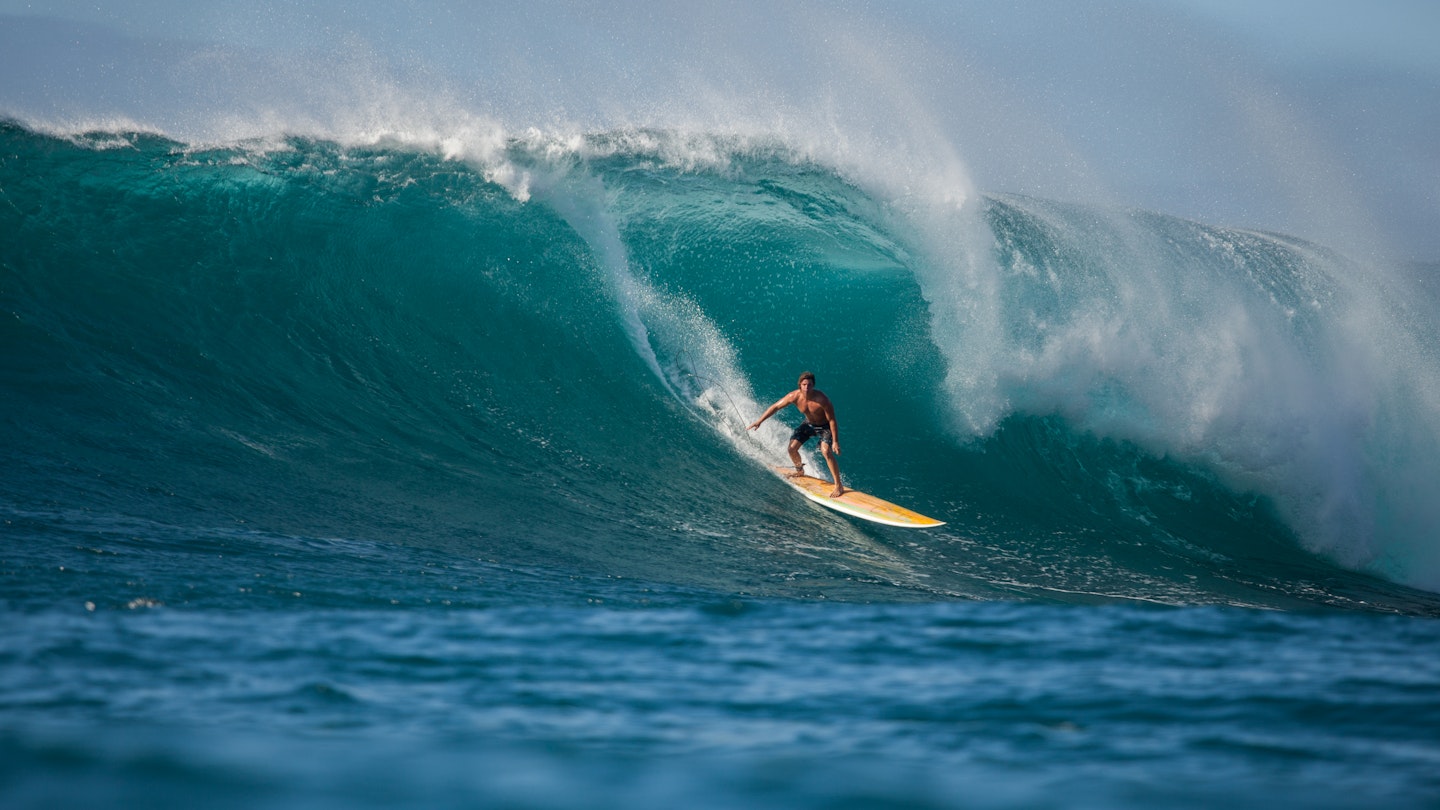The first time a surfer packs up their board and sets off in search of a new wave is likely the moment they realize their favorite break has become too crowded. This is how surf travel originated, with adventurous wave hounds scouring the globe for untouched swells and keeping their findings close to their chest. Surfers possess a unique ability to describe waves, conditions, and landscapes without revealing their precise locations. However, surf secrets rarely remain hidden for long.
In GoTravelDaily’s insights, professional surfers share what makes these top seven US surfing spots special.
Malibu, California
Former pro Jamie Brisick shares his love for this iconic wave off the coast of Los Angeles.
“Located 23 miles (37km) north of LAX, and also known as Surfrider Beach, Malibu is a historical landmark in surf culture. It’s where the iconic Malibu Chip board design was pioneered and where legendary surfer Miki Dora made headlines at the 1967 Malibu Invitational. Although higher-quality waves exist in California, none carry as much surf history.
“Malibu operates as a kind of chaotic yet harmonious experiment that teaches us about our surfing selves. Though I’ve witnessed intense disputes over waves, I’ve learned that surfing Malibu requires a sense of humor. Expect to be ‘dropped in on,’ and embrace the experience with humility and gratitude for whatever wave opportunity arises.”
Type of wave: Right-hand point break. Notably, First Point is mechanized while Second and Third offer faster, less crowded options.
Things to know: Longboards are preferred at First Point, while shortboards and hybrids dominate Second and Third. Respect the lineup, which tends to be friendly.
Mavericks, California
Jaimal Yogis recounts his exhilarating journey to surfing and conquering his first monster wave in California.
“I felt an instinctual surrender to the wave and simultaneously heightened senses. Embracing fear transformed my perspective, flooding me with power. As the wave approached, I felt strangely confident, paddling toward it. Suddenly, I was on my feet, riding a surreal wall of water. The overwhelming size of the wave was beautiful yet intimidating. I glided down the face, feeling more alive than ever.”
Cortes Bank, California
Pro big-wave surfer Greg Long explains why Cortes Bank is his top surfing spot.
“Cortes Bank sits 100 miles (160km) off the California coast, completely void of land in sight. The waves originate from 2000ft below, abruptly rising over an underwater seamount. The area’s extreme currents and peculiar boils add to its intrigue. I was drawn to this mysterious location as it represented the greatest challenge in my pursuit of big-wave surfing. Based on its symmetry, I feel it has the potential to generate surfable waves of 100ft.”
Type of wave: The Cortes Bank A-frame breaks off an underwater island, potentially yielding rideable 100ft (30m) waves.
Things to know: This location is suited for elite big-wave surfers only, and waves here can be significantly faster than those in Hawaii, making paddling nearly impossible. Most surfers rely on Jet Skis to access the waves.
Sunset Beach, Hawaii
Hawaii’s North Shore is the ultimate testing ground for surfers. Beau Flemister highlights the importance of Sunset Beach in his surfing experience.
“Sunset Beach remains unparalleled as it consistently holds waves larger than 12ft (Hawaiian size) without closing out. Surfing at Sunset on a big day is an achievement, regardless of whether one catches a set wave or faces a daunting wipeout. Its unpredictability and sheer scale pose a challenge that tests every surfer’s skills.”
Type of wave: A powerful, consistent right-hand reef break.
Things to know: A larger board (over 8ft) is advisable for more fun and a higher wave-catching success rate. Committing to a wave is crucial, as the swift currents can catch you off guard.
Outer Banks, North Carolina
The East Coast of the US boasts numerous great waves, with the Outer Banks holding a unique allure, as described by Matt Pruett.
“As a teenager, I found the Outer Banks both alluring and haunting. It was here that I first experienced the thrill of getting barreled—a milestone every surfer cherishes. The powerful waves were intoxicating, allowing me to ride consistently, amidst a stunning wild backdrop. Each session felt transcendent, drawing me deeper into the world of surfing.”
Type of wave: Beach breaks.
Things to know: Always bring your wetsuit gear; temperatures can drop dramatically during summertime. A sturdy surfboard may also help with steep, late drops.
Trestles, California
Southern California’s premier high-performance wave has drawn Chris Dixon and many other surfers alike.
“Middles became my spot of choice. It may be less consistent, but it offers fewer crowds and a relaxed vibe. One unforgettable winter morning, as I paddled out, the conditions were just right, leading to an incredible ride. The thrill of riding that perfect wave remains the pinnacle of my surfing journey.”
Type of wave: Left- and right-hand point breaks.
Things to know: The waves at Middles and Church typically move gradually; thus, they are better suited for larger boards. Avoid hogging waves with longboards at Lowers; there are alternate beaches to explore if Trestles is crowded.
Ditch Plains, New York
Chas Smith narrates the vibrant surf scene just hours east of New York City, centered in Montauk.
“Ditch Plains has seen surf activity since the early 1960s, with winter waves that can be incredibly challenging yet rewarding. The beach offers a melting pot of diverse surf culture, where hardcore locals blend seamlessly with novices and casual surfers. This lively atmosphere is what makes Ditch a distinctive surf destination.”
Type of wave: Rock-reef A-frames.
Things to know: The waves at Ditch are easily accessible and consistently break, making it highly crowded during the summer months. Embrace the experience and the communal spirit of the surf scene there.





